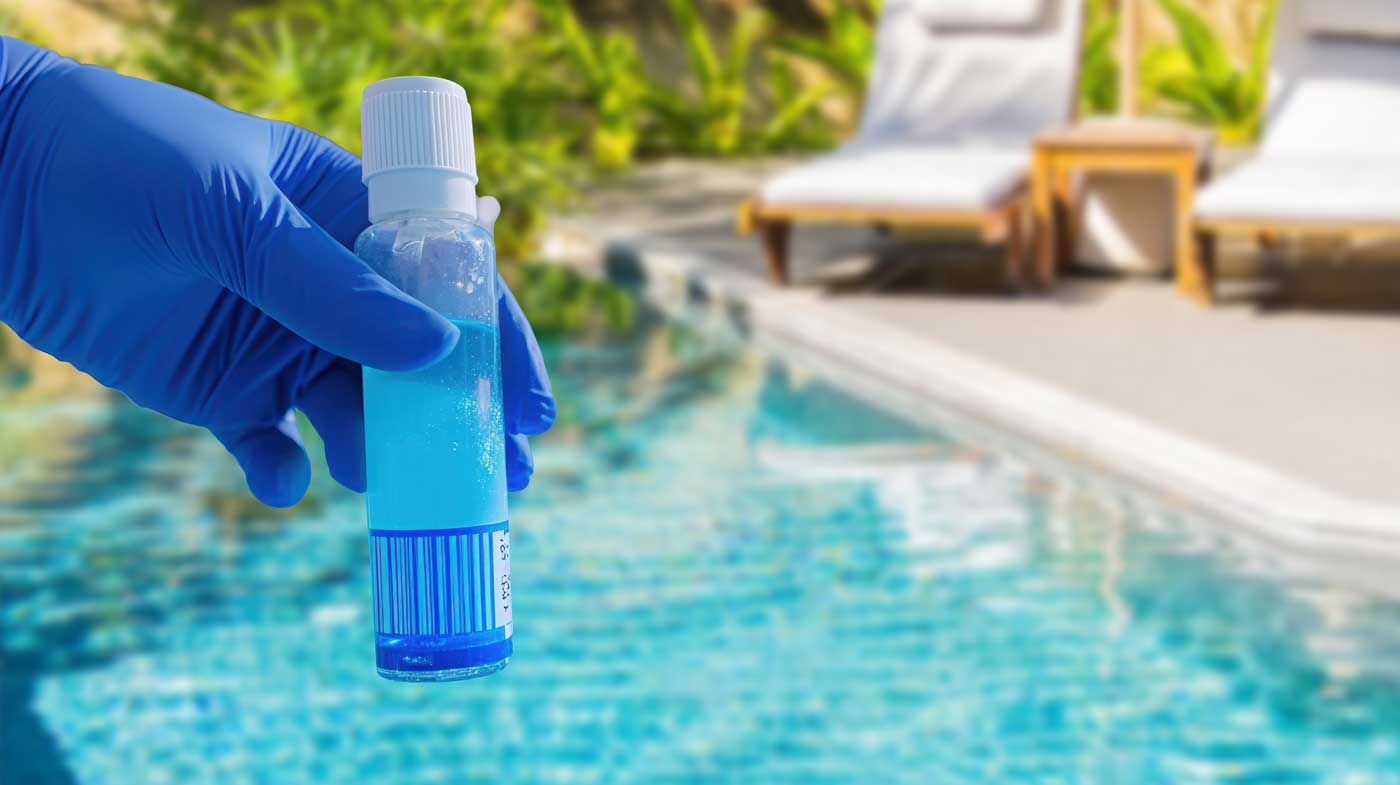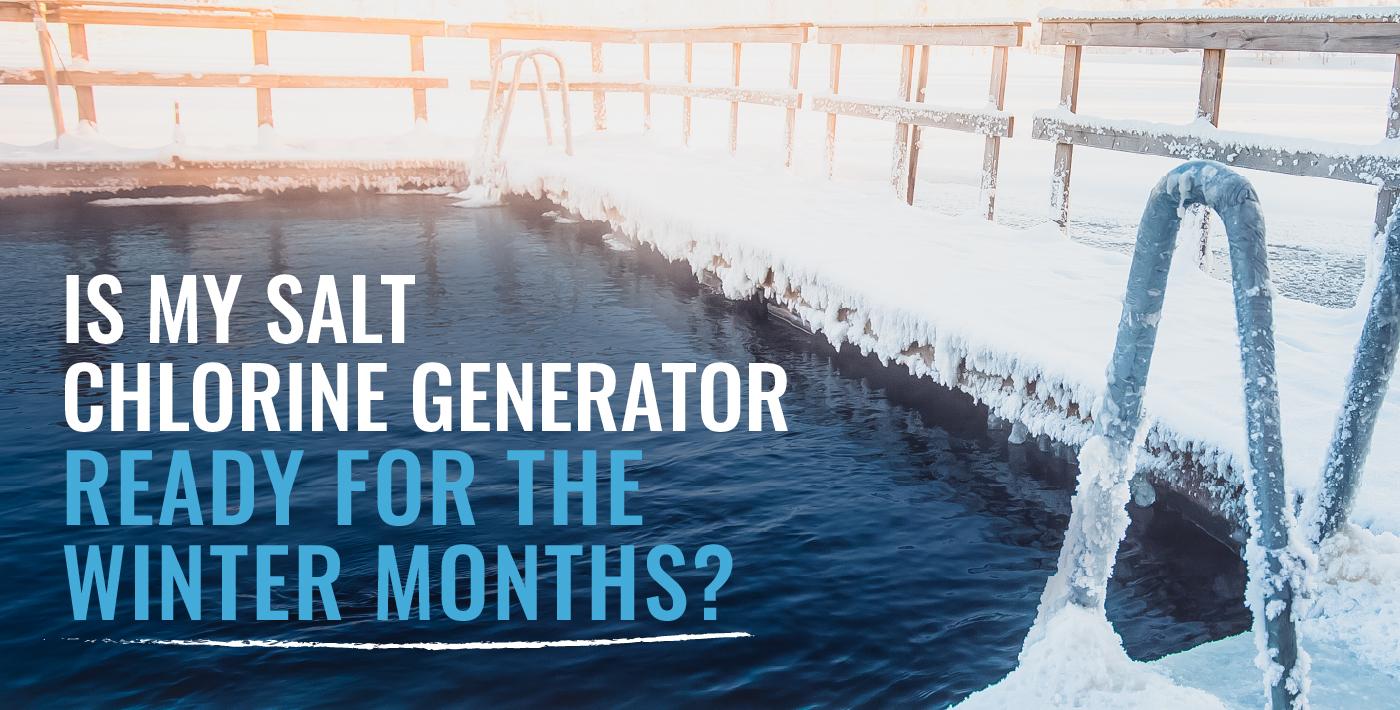Also, warranties can be voided if improper water chemistry is determined to be the reason…
Although most Pool Pilot Salt Chlorine Generators (SCG) are installed on residential pools, there are many reasons for commercial aquatic facilities to consider the Pool Pilot. The same benefits that Pool Pilot provides to residential pools, such as convenience and better water feel, also apply to commercial pools. However, commercial facilities also face unique challenges. Let’s look at those challenges, now, and see how the Pool Pilot offers the perfect solutions.
Accessibility
Commercial pools typically require larger quantities of chlorine to be used and stored on site. As a result, space becomes a premium. Many facilities have chlorine rooms just to store these quantities chlorine products. From 1,000-gallon liquid chlorine tanks to pails and pails of chlorine tablets, storing large quantities of chlorine not only takes up space, but bulk chlorine products can introduce hazardous and corrosive conditions at your facility.
Some chlorine storage rooms are not easy to access. For liquid chlorine users, this can mean chlorine tankers pumping chlorine through leaking hoses to the storage tank, or multiple trips carting yellow chlorine jugs. For tablet users, this may require hauling 50 lb pails or 100 lb drums from the parking lot to the storage room. Keeping the chlorine store supplied is even more challenging if the storage room is not on the same floor as the parking area.
Corrosion
Chemical fumes will permeate the area in which large quantities of chlorine is stored. An honest assessment of one’s equipment room will reveal that most metallic fixtures in the area show signs of corrosion or oxidation. Even with proper ventilation, metallic objects will often corrode in rooms where chlorine is stored.
Pool Pilots are installed directly in line and in the equipment room, with a minimal amount of salt added directly to the pool at start up. No additional storage of chlorine products is needed, except to respond to A.F.R.’s (accidental fecal release) or superchlorination needs.
The Pool Pilot electrolytic cells produce their own chlorine as the salt solution passes through them. The salt remains in the water, and is not used up in the process of generating chlorine. Salt is primarily lost through the following: backwashing the Filter, bather splash out, bathing suit drag out, rainfall overflow, and leaks. Basically, salt is lost whenever water is carried out of the pool. Normal evaporation, however, does not lower the salt concentration. What this means is that replenishment of salt is predictable, and can be planned for. For example, for every 2,000 gallons of water lost, 50 lbs of salt will need to be added. If you backwash using 200 gallons each time, after every 10 backwash cycles, you can plan on adding 50 lbs of salt. Since salt is added at pre-defined intervals, salt does not need to be stored on site.
Air Quality
Chlorine reacts with contaminants, such as sweat, bacteria, organics, etc., to produce chloramines (combined chlorine). Most commercial codes do not allow the level of chloramines to exceed 0.5 ppm. If the level exceeds this, then super chlorination is needed. The presence of chloramines is more noticeable with indoor pools. When one walks into a facility with an indoor pool, the smell most people assume comes from too much chorine is actually chloramines, which result from too little chlorine. Insufficient chlorine allows the chloramines to increase and results in the “chlorine smell.” Since the Pool Pilot produces chlorine in the flow of the return water, the concentration within the cell is at superchlorination levels. The result is that the water is treated at a much higher dosage than normal chlorination methods. Pool Pilot systems are able to better control the chloramines of a pool, which reduces the odor significantly. Lower chloramine levels translate to less lung and eye irritation for everyone, whether swimming or merely lounging by the pool.
Water Quality
Controlling the chloramines not only improves air quality around the pool, it also improves water quality as well. Since Pool Pilots typically cycle on and off throughout the day, the chlorine level is more stable and controlled. The pH from the Pool Pilot is closer to the desired pH level of the pool, so it’s milder on the swimmers. A better pH balance means fewer chemicals are needed to maintain proper chlorine and pH levels. Also, by adding salt to the pool water, its better matched to the salinity of our bodies, which helps reduce the dry skin some of us experience after swimming.
Cost Savings
The Pool Pilot commercial cell, CC15, produces 2.5 lbs/day of Sodium Hypochlorite. This is equivalent to approximately 1,000 lbs of Sodium Hypochlorite over its life cycle (1,100 lbs Tri-Chlor tablets). At an average cost of $1,000 for a replacement cell, that’s approximately $1.00/lb.
So is there cost savings? To answer that, consider what you are paying for your chlorine. Cells last approximately 24-30 months on a 12 month pool season for a properly sized Pool Pilot system. This provides a fixed cost for chlorination treatment for that same amount of time. You can view this as an inflation-proof cost of chlorination. How much will your chlorine prices go up next season?
Convenience
The Pool Pilot can be controlled manually or interfaced with ORP/pH controllers. Professionals recommend using an automated controller for any pool that experiences varied bather load change throughout the day. Pools that have light or steady usage can be easily manually maintained by setting the purifier %, with occasional use of the Boost function (for heavy bather loads or bad weather). The Pool Pilot allows control in 1% increments, so the system can be fine-tuned for any pool. Once the purifier % setting is found, there is little need to make any adjustments to this setting, as the Pool Pilot’s Automatic Temperature Compensation feature will make changes to the purifier % setting, based on water temperature changes.
Heavy chlorine demand conditions may require manual additions of chlorine for quick compensation of chlorine needs. More subtle changes, such as increase in bather loads on a daily basis, will require further adjustment of the purifier % setting. These are not “set it and forget it” devices. You’re still producing chlorine and adding it to your pool. If not tested, adjusted, and maintained, it can over chlorinate or under chlorinate.
Finally, with any commercial salt chlorination, you should make sure you comply with your local Department of Health guidelines and verify that your salt system is NSF50 certified. If city and state regulations regulate commercial salt chlorine levels, you must also comply with those. Most cities and states will have a minimum pounds-per-day feed rate that a salt system must be capable of producing.
AutoPilot is here to help make your decision and transition to Salt Chlorine Generation smooth and easy. Call us for more information (727-823-5642 / 727-823-5642).



This Post Has One Comment